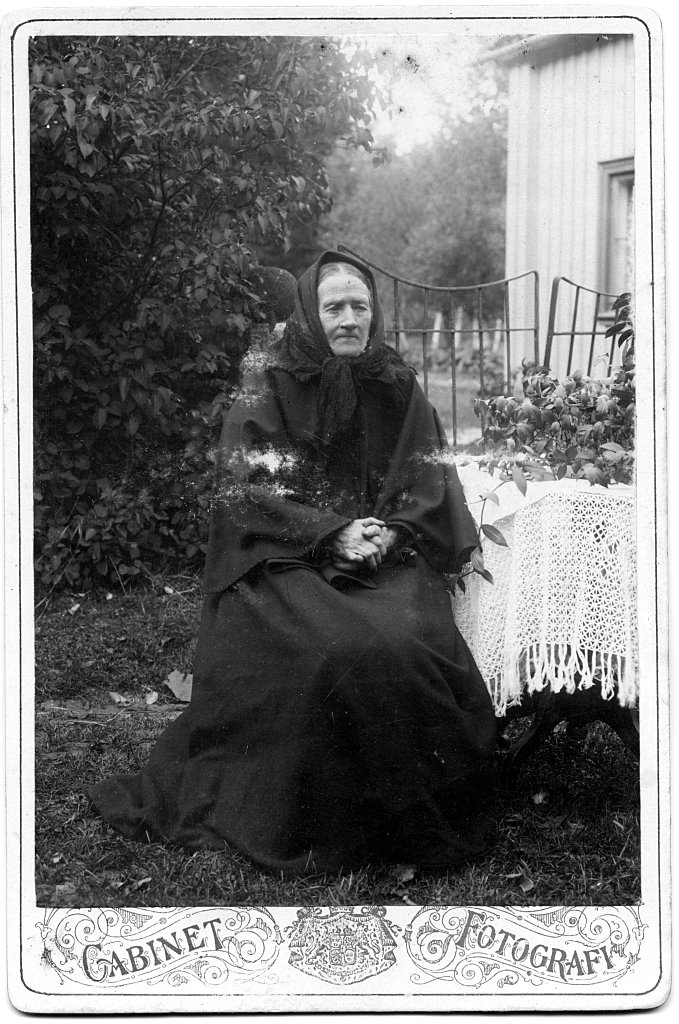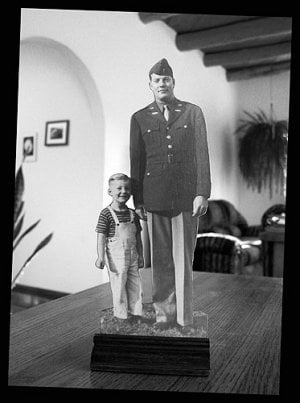x-ray
Mentor
I posted this image earlier but didn’t have any information about the tribe or photographer but I do now. In researching this I found the exact same image in an article referencing the image to the Smithsonian.
Turns out the photo was made by Charles Milton Bell at his Washington DC studio. There are two dates that appear, 1875 and 1880. I’ve contacted the Smithsonian to help ID the people but do know the identity of two of them.
First the tribe is the Lakota Sioux. The center person is a Sioux tribal chief, Spotted Tail. If this was made in 1880, he was shot in the back and killed by a tribe member the year after this photo was made.
The next man to the left is Lakota Chief Sitting Bull. Both men were identified in the article I read.
To the extreme right there’s a man not fully visible but the paper backing on the mask is partially torn and I can clearly see that person. Unfortunately the paper is fragile and stuck to the back of the tintype so I’m unable to remove the mask.
The other person under the mask however may be one of the nephews of Sitting Bull, One Bull. I can’t say for certain but he was one of two nephews that Sitting Bull handed responsibility to at the Little Bighorn. The other nephew was White Bull but I don’t believe he’s one of the figures.
Awaiting more information from the Smithsonian.
Turns out the photo was made by Charles Milton Bell at his Washington DC studio. There are two dates that appear, 1875 and 1880. I’ve contacted the Smithsonian to help ID the people but do know the identity of two of them.
First the tribe is the Lakota Sioux. The center person is a Sioux tribal chief, Spotted Tail. If this was made in 1880, he was shot in the back and killed by a tribe member the year after this photo was made.
The next man to the left is Lakota Chief Sitting Bull. Both men were identified in the article I read.
To the extreme right there’s a man not fully visible but the paper backing on the mask is partially torn and I can clearly see that person. Unfortunately the paper is fragile and stuck to the back of the tintype so I’m unable to remove the mask.
The other person under the mask however may be one of the nephews of Sitting Bull, One Bull. I can’t say for certain but he was one of two nephews that Sitting Bull handed responsibility to at the Little Bighorn. The other nephew was White Bull but I don’t believe he’s one of the figures.
Awaiting more information from the Smithsonian.
Attachments
x-ray
Mentor
Here’s a postcard from the 30’s of the worlds smallest couple. They were part of a traveling show and “midget” troupe in the 30’s. It was the Klinkhart European Midgets presented bl Al G. Barnes.
Although this is a postcard it’s an actual gelatin silver print and shows signs of mild deterioration from improper fixing and washing.
Although this is a postcard it’s an actual gelatin silver print and shows signs of mild deterioration from improper fixing and washing.
Attachments
x-ray
Mentor
I have no information on this image other than estimating the age. Best estimate is around 1870 due to the mount and type of print. It’s a cabinet card on some sort of photographic paper. I don’t believe it’s albumen like later cards and not sure what it is.
Can you ID the uniforms? It’s post civil war and May have been a dress uniform for cavalry soldiers but not certain.
Can you ID the uniforms? It’s post civil war and May have been a dress uniform for cavalry soldiers but not certain.
Attachments
DownUnder
Nikon Nomad
Wonderful images. From the days when a photograph actually meant something.
Sobering in many ways to consider that a photograph is probably the only surviving 'thing' of all these subjects who are now long gone.
They live on in these images.
It makes me wonder about all the people residing in my photo archives...
Sobering in many ways to consider that a photograph is probably the only surviving 'thing' of all these subjects who are now long gone.
They live on in these images.
It makes me wonder about all the people residing in my photo archives...
titrisol
Bottom Feeder
mconnealy
Well-known
x-ray
Mentor
Richard G
Mentor
Never noticed this thread before. The parade in Quito in 1922 (early page here) is made by the out of focus uncovered head right in front of the camera. It is so immediate and has a psychological depth and speaks in the language of today.
Many other interesting photographs, especially the parents of RFF members.
Many other interesting photographs, especially the parents of RFF members.
Freakscene
Obscure member
Lots of them passed on their DNA. That’s much a more tangible thing than a photo, which, these days especially, can be entirely fake.Wonderful images. From the days when a photograph actually meant something.
Sobering in many ways to consider that a photograph is probably the only surviving 'thing' of all these subjects who are now long gone.
They live on in these images.
It makes me wonder about all the people residing in my photo archives...
Mos6502
Well-known
 Peto, Brassey & Betts by Berang Berang, on Flickr
Peto, Brassey & Betts by Berang Berang, on FlickrThe oldest photo in my collection c. 1866. I bought this photo on ebay, the description was erroneous, but there's really not much clue in the photo for the location. After some back and forth with various collectors and history buffs the general era and probable location was narrowed down and I contacted the Danish railway museum. It turned out to be a one of a kind, previously unknown photo. It is a work train operated by Peto, Brassey, and Betts, railway contractors who built or supplied lines all over the world in the 19th century. At one point the company was responsible for more miles of rail than any other contractor on the planet. They built everything. The locomotives, the cars, the iron bridges, it was all made in England and shipped to where it needed to go. This is the only known photo of one of their work trains with workers. It shows construction of the Schleswigsche Eisenbahn, although the specific location cannot be ascertained from the photo. Lots of lovely details, including a teapot resting in the top of the locomotive's safety valve! (possible melting tallow for the machine, but perhaps just keeping the brew warm!)
x-ray
Mentor
Beautiful image an a real treasure. What size is the print? Albumen?
mconnealy
Well-known
p.giannakis
Pan Giannakis
AndersG
Well-known

A photograph of my father's-mother's-mother's-mother's-mother Sara Dirdriksdotter from about 1900. She lived from 1828 to 1908.
Link to image.
Freakscene
Obscure member
Your family has short generation time!
A photograph of my father's-mother's-mother's-mother's-mother Sara Dirdriksdotter from about 1900. She lived from 1828 to 1908.
Link to image.
x-ray
Mentor
Freakscene
Obscure member
Fantastic. No-one blinked!Great images!
One from the collection. No idea who or where. It’s about 1/8 plate in size and a beautiful tintype. Groups are a little more unusual. A wedding party perhaps?
I love the way that the individual objects were sufficiently valued and valuable in the 19th century that they are jewel-like treasures. I don’t dislike the photo roll in my phone, but I also need to work out how to make a pile of tiny, beautiful objects like these some day.
x-ray
Mentor
Consider digital negatives and small platinum palladium prints. Years ago my wife and I had a cat for 21 years and we finally lost her. She was very special to us so I took 35mm B&W negatived I had made of her and made a series of platinum palladium contact prints. I found some beautiful tiny frames made for a child’s doll house that fit perfectly and framed them. My wife built a doll house over a period of ten years and she hung them on the walls of the doll house.Fantastic. No-one blinked!
I love the way that the individual objects were sufficiently valued and valuable in the 19th century that they are jewel-like treasures. I don’t dislike the photo roll in my phone, but I also need to work out how to make a pile of tiny, beautiful objects like these some day.
There’s a company, I don’t remember the name, that makes reproduction Union cases. Small platinum prints, albumen or Rockland colloid prints on tin would be very nice.
x-ray
Mentor
Frealscene, something I’ve been thinking about is recreating the orotone process. Glass plates are available now or Rockland emulsion could be used and print a positive on it. When dry apply gold leaf and I’d probably apply a sandarac varnish like with wet plate.
I’ve seen several images done with that process by Edward Curtis. They’re unique and very rich in tone. It should be pretty easy too.
I’ve seen several images done with that process by Edward Curtis. They’re unique and very rich in tone. It should be pretty easy too.
Freakscene
Obscure member
I’ve been making digital negatives to make platinum prints; orotones would be beautiful and are a great idea. I can make my own silver chloride emulsion that should work better than the Rockland product.
One supplier of the cases is: modern reproduction cases for antique wet plate images (tintypes, ambrotypes, daguerreotypes)
Marty
One supplier of the cases is: modern reproduction cases for antique wet plate images (tintypes, ambrotypes, daguerreotypes)
Marty
Share:
-
This site uses cookies to help personalise content, tailor your experience and to keep you logged in if you register.
By continuing to use this site, you are consenting to our use of cookies.










